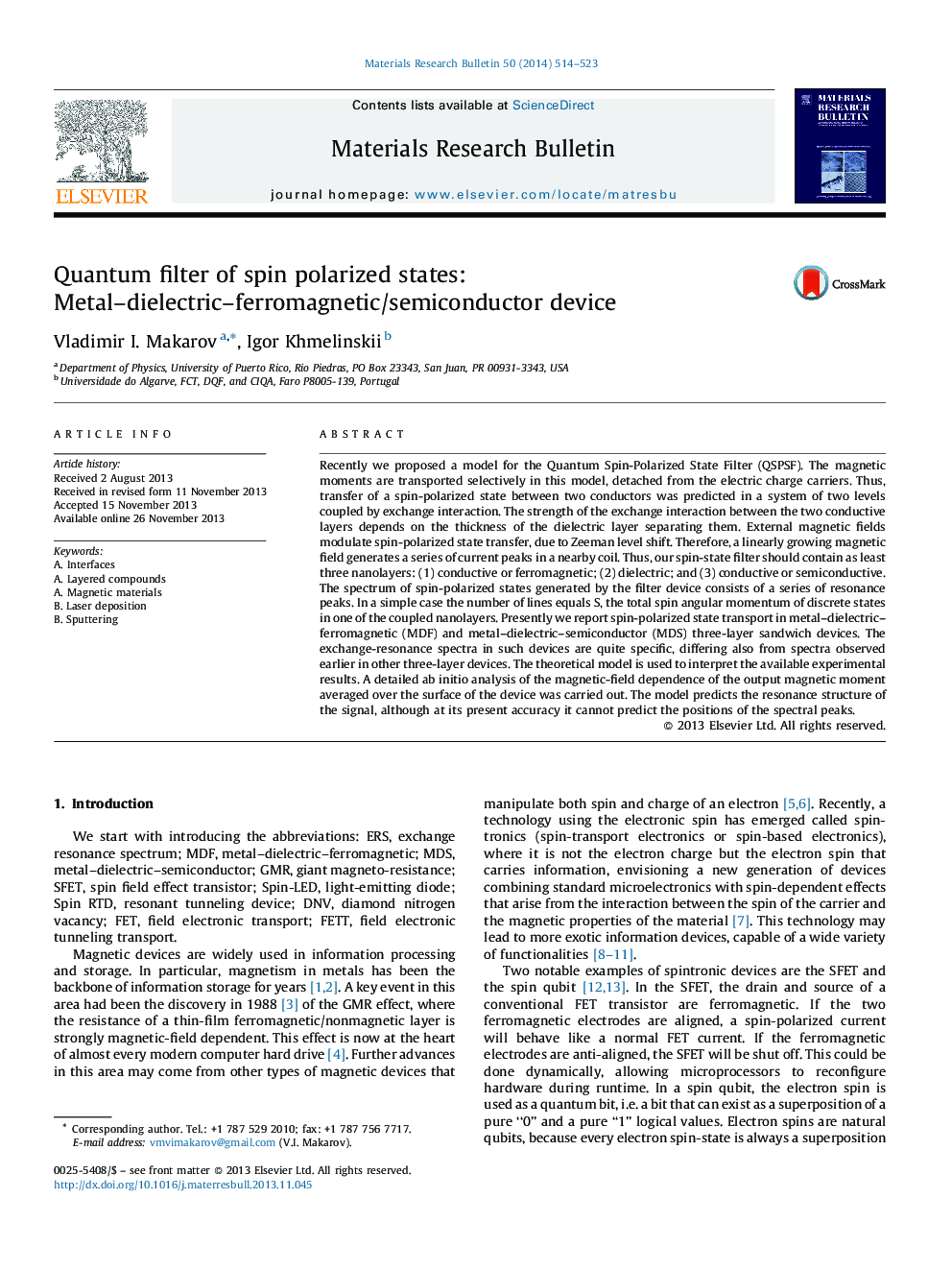| کد مقاله | کد نشریه | سال انتشار | مقاله انگلیسی | نسخه تمام متن |
|---|---|---|---|---|
| 1488556 | 1510725 | 2014 | 10 صفحه PDF | دانلود رایگان |
• Development of a new spintronics device.
• Development of quantum spin polarized filters.
• Development of theory of quantum spin polarized filter.
Recently we proposed a model for the Quantum Spin-Polarized State Filter (QSPSF). The magnetic moments are transported selectively in this model, detached from the electric charge carriers. Thus, transfer of a spin-polarized state between two conductors was predicted in a system of two levels coupled by exchange interaction. The strength of the exchange interaction between the two conductive layers depends on the thickness of the dielectric layer separating them. External magnetic fields modulate spin-polarized state transfer, due to Zeeman level shift. Therefore, a linearly growing magnetic field generates a series of current peaks in a nearby coil. Thus, our spin-state filter should contain as least three nanolayers: (1) conductive or ferromagnetic; (2) dielectric; and (3) conductive or semiconductive. The spectrum of spin-polarized states generated by the filter device consists of a series of resonance peaks. In a simple case the number of lines equals S, the total spin angular momentum of discrete states in one of the coupled nanolayers. Presently we report spin-polarized state transport in metal–dielectric–ferromagnetic (MDF) and metal–dielectric–semiconductor (MDS) three-layer sandwich devices. The exchange-resonance spectra in such devices are quite specific, differing also from spectra observed earlier in other three-layer devices. The theoretical model is used to interpret the available experimental results. A detailed ab initio analysis of the magnetic-field dependence of the output magnetic moment averaged over the surface of the device was carried out. The model predicts the resonance structure of the signal, although at its present accuracy it cannot predict the positions of the spectral peaks.
Figure optionsDownload as PowerPoint slide
Journal: Materials Research Bulletin - Volume 50, February 2014, Pages 514–523
